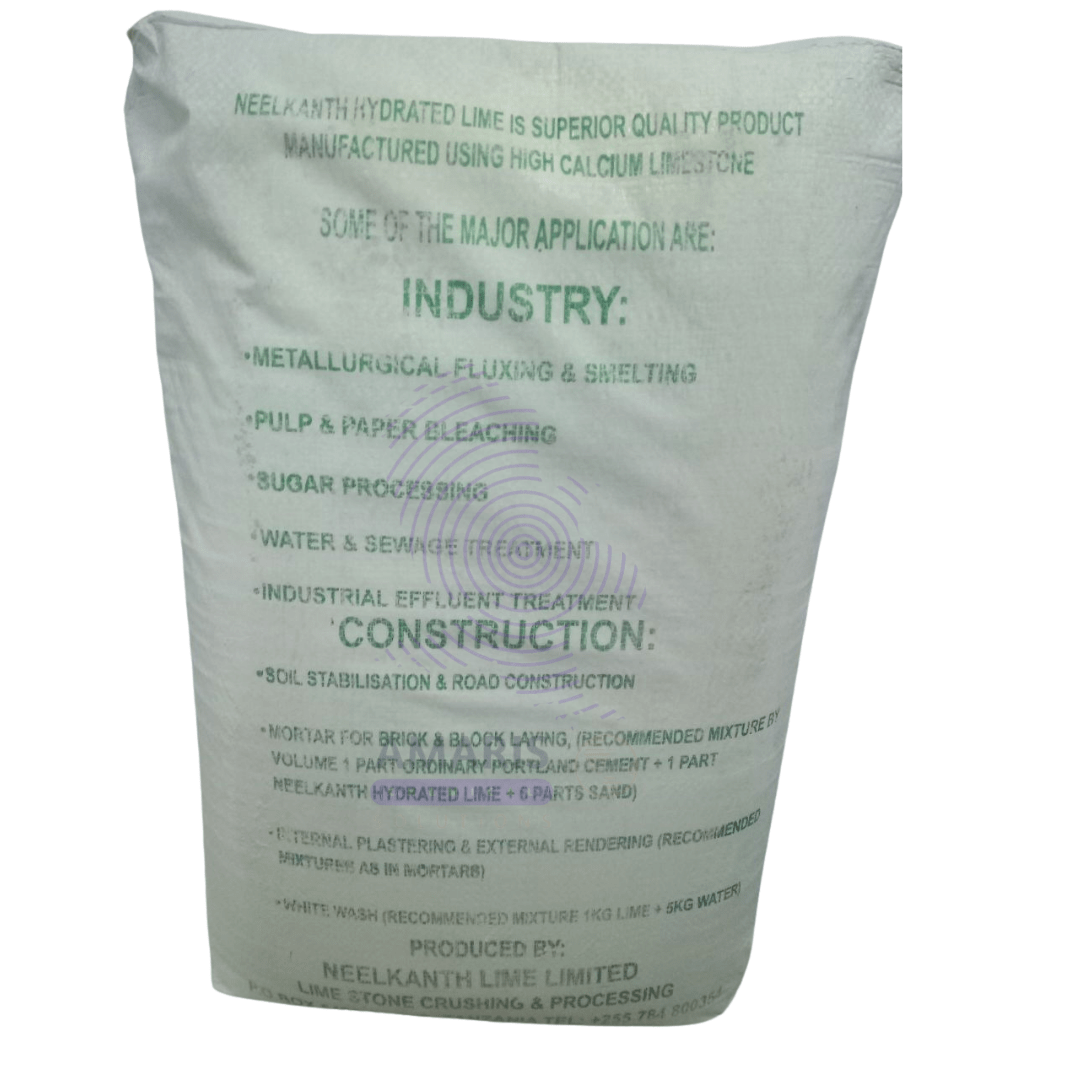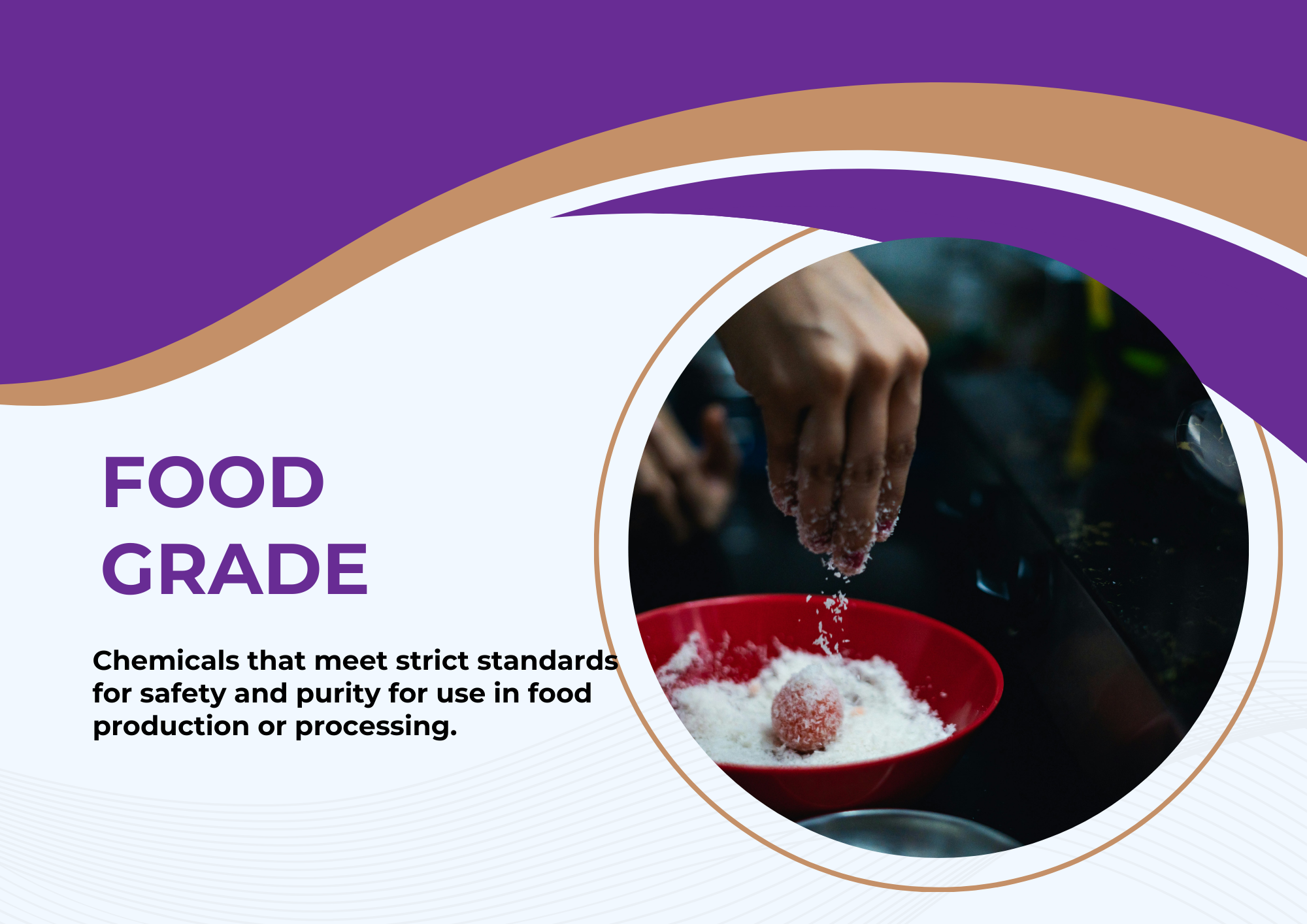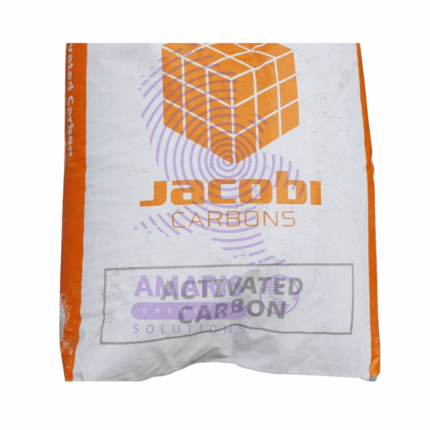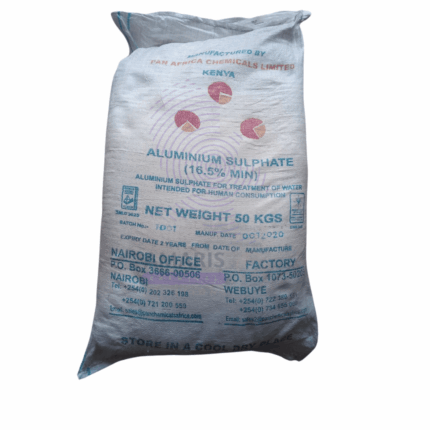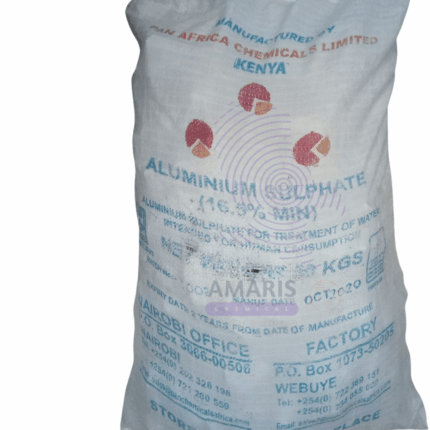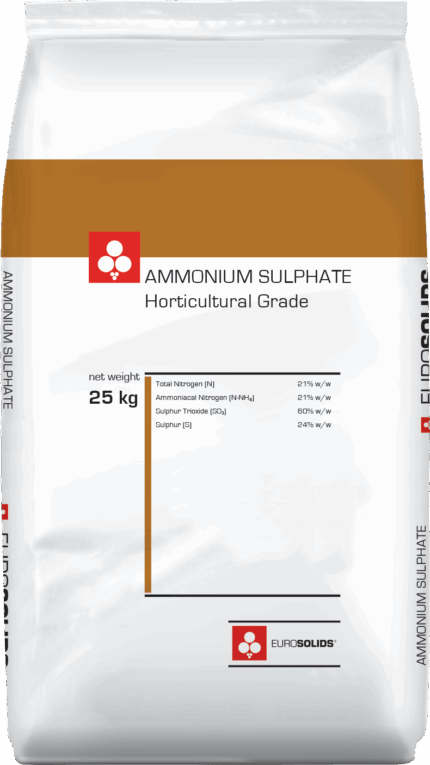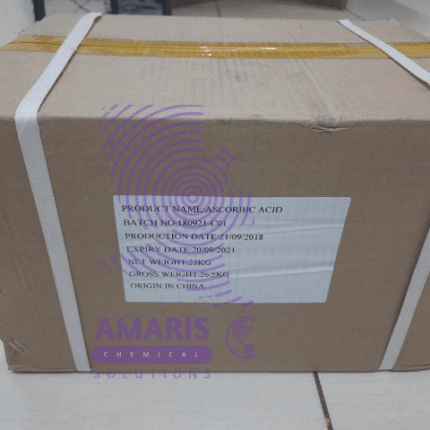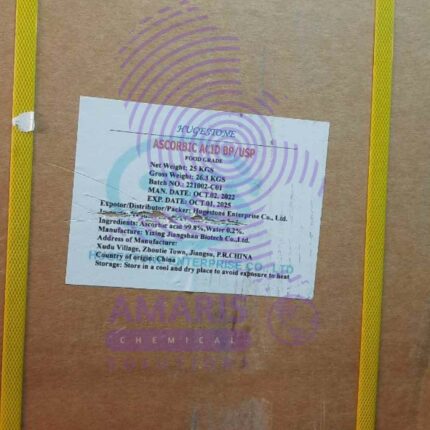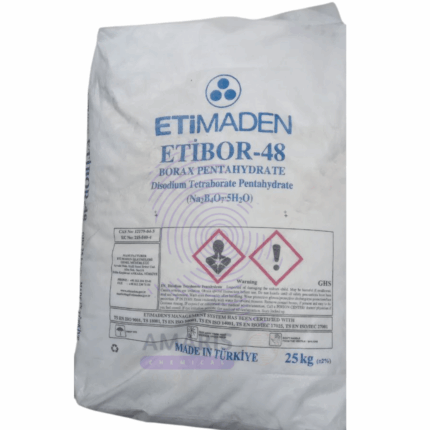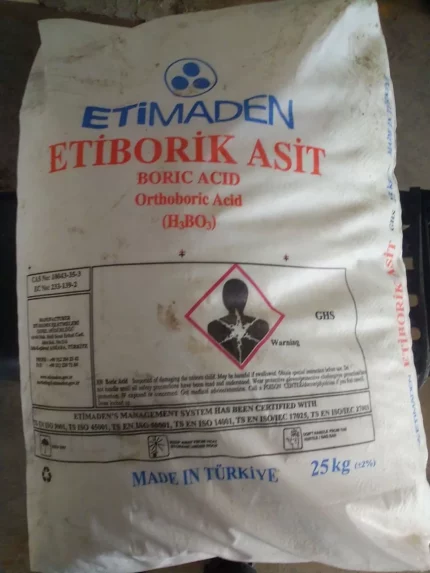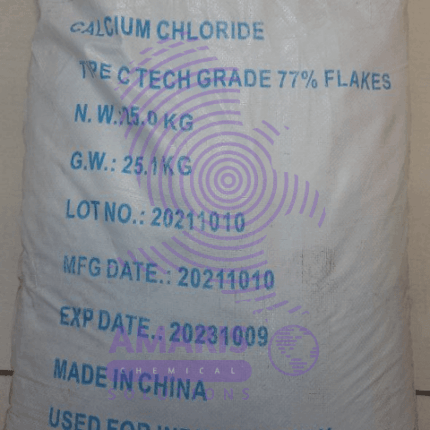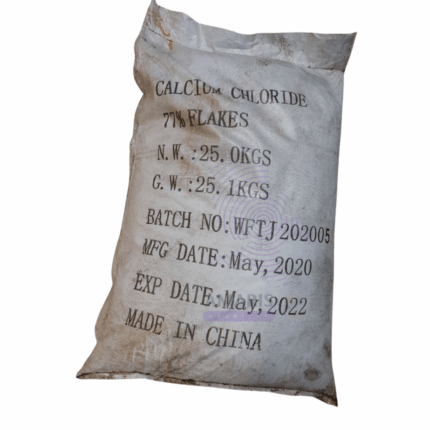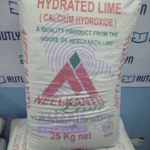
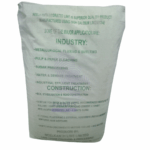
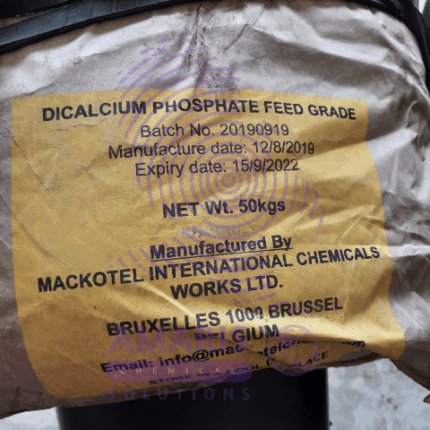

Calcium Hydroxide(Hydrated lime)
$3,500.00 Original price was: $3,500.00.$3,000.00Current price is: $3,000.00.
Calcium Hydroxide(Hydrated lime) , also known as hydrated lime, is a chemical compound with the formula Ca(OH)2. It is a white, odorless, and alkaline substance that is produced by adding water to calcium oxide, also known as quicklime. The resulting reaction produces calcium hydroxide and releases a large amount of heat.
Hydrated lime is commonly used in various industrial applications such as water treatment, construction, agriculture, and food processing. It is also used as a pH regulator and a flocculant in wastewater treatment plants. Additionally, it is used in the production of cement, as a soil stabilizer, and in the manufacture of chemicals such as calcium stearate and calcium hypochlorite.
In summary, calcium hydroxide, or hydrated lime, is a chemical compound with various industrial applications, produced by adding water to calcium oxide.
Calcium Hydroxide(Hydrated lime) Uses
- It is used to help prevent the deterioration of apples during storage.
- It is used in ammonia recovery during gas production.
- It is used in the purification of sugar juices.
- It is used in the food industry as a buffer and neutralizing agent.
- It is used in the poultry industry as a shell-forming agent.
- It is used in road construction.
- It is used in the stabilization of soils for road base.
- It is used in the treatment of acidic soils.
- It is used as a drilling fluid.
- It is used in fireproofing coatings.
- It is used to preserve eggs.
- It is used in dehairing hides in the leather industry.
- It is used in sewage treatment as a classifying agent or as a flocculant.
- It is used in the paper industry in the kraft process. This involves the converting of wood into wood pulp.
- It is used in the pickling of cucumbers.
- It is used in the production of plastics.
- It is used in the root canal process for filling cavities in the human teeth.
| AVAILABLE PACK SIZE |
25kg( Metal or Plastic Jerrycan/ Bucket, Bag, Box, Polythene bag, Carton bag) |
|---|
1. Basic Identification Attributes
- Chemical Name: Calcium hydroxide (IUPAC)
- CAS Number: 1305-62-0
- HS Code: 2825.10.00 (Calcium hydroxide and oxide)
- Molecular Formula: Ca(OH)₂
- Synonyms:
- Slaked lime
- Hydrated lime
- Pickling lime
- Food additive E526
2. Physical & Chemical Properties
- Physical State: White powder or crystalline solid
- Color & Odor: White, odorless
- Boiling Point: Decomposes at 580°C (loses water to form CaO)
- Melting Point: 580°C (with decomposition)
- Density: 2.211 g/cm³
- Solubility:
- Water: 1.73 g/L (25°C), solubility decreases with temperature
- Insoluble in alcohol
- pH Level: 12.4 (saturated solution; strongly alkaline)
- Vapor Pressure: Negligible
- Hygroscopicity: Absorbs CO₂ from air to form calcium carbonate
3. Safety & Hazard Attributes
- Hazard Class (GHS):
- Skin corrosion/irritation (Category 1B)
- Serious eye damage/irritation (Category 1)
- NFPA Ratings:
- Health: 3 | Flammability: 0 | Reactivity: 1
- Exposure Limits:
- OSHA PEL: 15 mg/m³ (total dust)
- ACGIH TLV: 5 mg/m³ (respirable fraction)
- Reactivity:
- Reacts with acids (exothermic neutralization)
- Incompatible with aluminum, fluorine, and strong oxidizers
4. Storage & Handling Attributes
- Storage Conditions:
- Tightly sealed containers
- Dry, cool, well-ventilated area
- Protect from moisture and CO₂ exposure
- Incompatible Materials:
- Acids
- Aluminum powder
- Phosphorus pentoxide
- Container Type:
- Multi-wall paper bags with moisture barrier
- Plastic-lined containers
- Shelf Life: 1-2 years if properly stored
- Special Handling:
- Wear chemical goggles, gloves, and dust mask
- Use local exhaust ventilation
- Avoid creating dust
5. Regulatory & Compliance Attributes
- Regulatory Status:
- FDA: GRAS (E526) as food additive
- EPA: Listed in inert ingredients for pesticides
- REACH: Registered
- Hazard Symbols (GHS):
- Corrosion symbol
- Exclamation mark
- Transportation Restrictions:
- Not classified as dangerous goods for transport
- UN Number: None assigned
- Waste Disposal:
- Neutralize with acid before disposal
- Dispose as non-hazardous waste per local regulations
6. Environmental & Health Impact
- Ecotoxicity:
- LC50 (fish): >100 mg/L (practically non-toxic)
- May raise pH of water bodies
- Persistence:
- Reacts with CO₂ to form calcium carbonate
- Does not bioaccumulate
- Carcinogenicity:
- Not listed as carcinogenic by IARC, NTP, or OSHA
- Biodegradability: N/A (inorganic compound
Personal Protection
- Respiratory Protection: Use a dust mask (NIOSH N95 or higher)when handling powder to prevent inhalation of dust particles.
- Eye Protection: Wear safety gogglesto prevent eye irritation from dust or splashes.
- Skin Protection: Use impermeable gloves (nitrile or neoprene)to avoid skin contact, especially with concentrated solutions.
- General Hygiene: Avoid ingestion and prolonged skin exposure. Wash hands thoroughly after handling.
Handling & Storage
- Store in a cool, dry, well-ventilatedarea, away from moisture and incompatible chemicals (e.g., strong oxidizers).
- Keep containers tightly sealedto prevent absorption of moisture (hygroscopic).
- Use non-sparking toolswhen handling large quantities.
- Avoid contact with water(exothermic dissolution, may cause splattering).
Spill Management
- For dry spills: Sweep up carefully (avoid dust generation) and dispose of in a sealed container.
- For liquid spills (solution): Absorb with inert material (e.g., vermiculite, sand) and clean with water.
- Large spills: Contain and prevent entry into drains or waterways (may be harmful to aquatic life).
Inhalation
- Move to fresh air
- If breathing difficulties occur, seek medical attention.
Skin Contact
- Remove contaminated clothing.
- Rinse affected area with plenty of water for at least 15 minutes.
- If irritation or burns develop, seek medical attention.
Eye Contact
- Rinse immediately with lukewarm water for at least 15 minutes, holding eyelids open.
- Seek immediate medical attentionif irritation persists.
Ingestion
- Do NOT induce vomiting.
- Rinse mouth with water and drink milk or waterto dilute.
- Seek medical attentionif large amounts are ingested.
Non-flammable, but reacts exothermically with water (can cause steam burns or splattering).
Hazardous Decomposition:
- At high temperatures, decomposes into calcium oxide and chlorine gas.
Extinguishing Media:
- Use dry chemical powder, CO₂, or sandfor surrounding fires.
- Avoid water jets(can intensify reaction with hot CaCl₂).
Firefighter Protection:
- Wear self-contained breathing apparatus (SCBA)and full protective gear.



 LABORATORY EQUIPMENT & APPARATUS
LABORATORY EQUIPMENT & APPARATUS
 Fertilizers
Fertilizers Plant Growth Regulators
Plant Growth Regulators Soil Conditioners
Soil Conditioners Animal Feed Additives
Animal Feed Additives Biostimulants
Biostimulants Dough Conditioners
Dough Conditioners Flour Treatments
Flour Treatments Fat Replacers
Fat Replacers Preservatives (baking)
Preservatives (baking)
 Surfactants (cleaning)
Surfactants (cleaning) Builders
Builders Bleaching Agents
Bleaching Agents Enzymes
Enzymes Solvents (cleaning)
Solvents (cleaning) Fragrances
Fragrances


